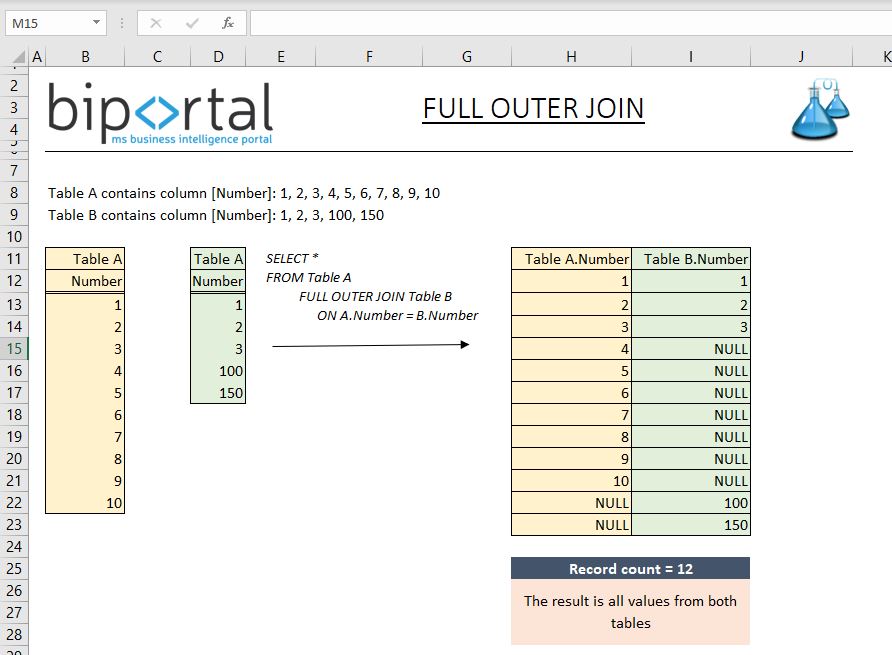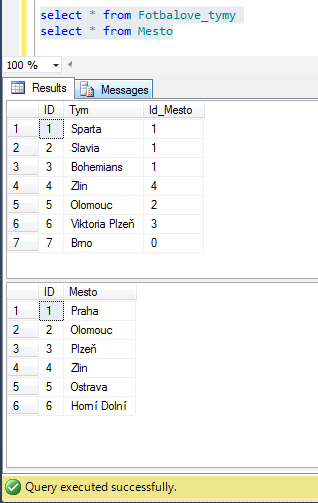When we work with SQL database we usually need to work with more than 1 table. Some values are in one table and the others are in a different one = distribution of data into many tables which are connected between each other (via keys) is the principle of relational database.
There are 5 basic kinds of joins: INNER JOIN, LEFT JOIN, RIGHT JOIN, CROSS JOIN, FULL JOIN (this article). Commands FULL OUTER JOIN and FULL JOIN are equivalent
Now or later you will need to know how to connect the tables. Let’s learn it!
FULL OUTER JOIN Syntax
SELECT [Table_A].[Column 1] ,[Table_A].[Column 2] ,[Table_B].[Column 3]FROM [Table_A] FULL OUTER JOIN [Table_B] ON [Table_A].[Id] = [Table_B].[Id]
Imagine 2 tables. Each of the tables will consist of only 1 column [Number]:
- Table A consists of column [Number]: 1, 2, 3, 4, 5, 6, 7, 8, 9, 10
- Table B consists of column [Number]: 1, 2, 3, 100, 150
What will be the result of the script?
SELECT
[Table_A].[Number], [Table_B].[Number]
FROM [Table_A]
FULL JOIN [Table_B]
ON [Table_A].[Number] = [Table_B].[Number];
The result is 12 records:
Hint: Take a look at the examples of all the possible kinds of table joins to better understand the differences between each kind (see other articles). I always use the same example – football teams.
FULL JOIN Example – Football teams
We will take a look at the database table joins using football teams. We have 2 tables, take a look at them (sorry, texts in screenshots and object names are in Czech):
- Fotbalove_tymy (ID, Tym, Id_mesto) – table with list of the football teams
- Mesta (ID, Nazev_mesta) – table with towns
The task is to display the list of football teams with their hometown. Script will look like this:
SELECT [Fotbalove_tymy].[ID] ,[Fotbalove_tymy].[Tym] ,[Mesto].[Mesto]FROM [Fotbalove_tymy] FULL JOIN [Mesto] ON [Fotbalove_tymy].[Id_Mesto] = [Mesto.Id];
We create a relation between the tables. The condition by which both records from the table will get connected lies in ON clause.
All records from both tables are displayed. On places where the ON clause requirement was not met (“Fotbalove_tymy.Id_Mesto=Mesto.Id”) we see NULL.
- Football team Brno has ID_mesto=0. This ID does not exist in right (B) table “Mesto” and therefore we do not see any town connected to team Brno
- On the other hand, Ostrava and Horni Dolni do not have any football team in their table and therefore fields fotbalove_tymy.[ID] and fotbalove_tymy.[Tym] have NULL values (not found)


